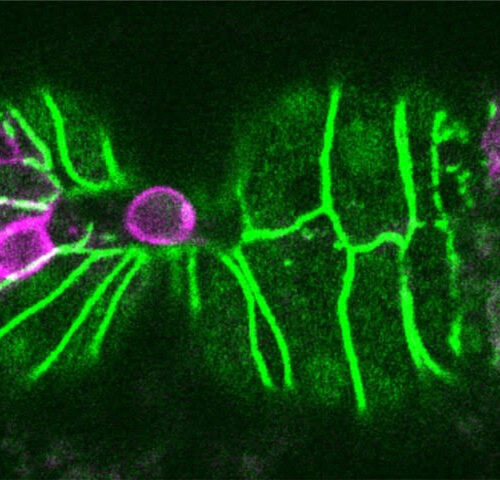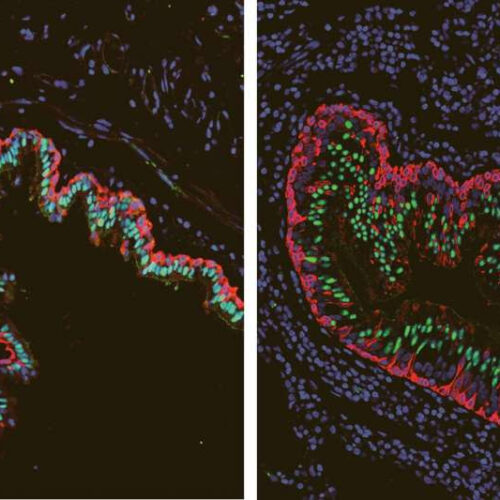Study suggests this process for eliminating unneeded cells may also protect against cancer. For all animals, eliminating some cells is a necessary part of embryonic development. Living cells are also naturally sloughed off in mature tissues; for example, the lining of the intestine turns over every few days. One way that organisms get rid of...
Personalized sweat sensor reliably monitors blood glucose without finger pricks
Many people with diabetes endure multiple, painful finger pricks each day to measure their blood glucose. Now, researchers reporting in ACS Sensors have developed a device that can measure glucose in sweat with the touch of a fingertip, and then a personalized algorithm provides an accurate estimate of blood glucose levels. A hand-held device combined...
Artificial Intelligence System May Improve Diagnosis of Complicated Metastatic Cancers
Using routinely acquired pathology slides, the model accurately predicts the origin of cancers with unknown primary tumors. In 1 to 2 percent of cancer cases, the primary site of tumor origin cannot be determined. Because many modern cancer therapeutics target primary tumors, the prognosis for a cancer of unknown primary (CUP) is poor, with a...
Phonon Probe to Image Tissues Ultrasonically at Nanoscale
MAY 5TH, 2021 MEDGADGET Visual signs of disease can often be spotted within affected tissues, and advances in histopathology have provided clinicians with powerful diagnostic tools to spot those signs. Microscopes are the cornerstone of this trade, and although they have proven to be extremely useful, they do suffer from some limitations. They are effectively 2D...
New imaging tech offers incredibly detailed 3D videos of pulsating brains
By Rich Haridy May 05, 2021 The detail in these new 3D aMRI visualizations may be able to help identify abnormalities, such as those caused by blockages of spinal fluids, which include blood and spinal fluid in the brain3D aMRI method outlined in Terem et al. Magnetic Resonance in Medicine (2021); Abderezaei et al. Brain...
Research helps explain links between antibiotic use and heart attack risk
by University of Dundee Credit: Unsplash/CC0 Public Domain University of Dundee research has helped explain why a commonly used antibiotic can lead to an increased risk of heart attacks, opening up the possibility of precision prescribing based on a patient’s genes. Clarithromycin accounts for around 15% of all primary care antibiotic prescriptions in the UK and is recommended...
Epilepsy research reveals why sleep increases risk of sudden death
by University of Virginia Credit: CC0 Public Domain New research from the University of Virginia School of Medicine reveals why sleep can put people with epilepsy at increased risk of sudden death. Both sleep and seizures work together to slow the heart rate, the researchers found. Seizures also disrupt the body’s natural regulation of sleep-related changes. Together, in some instances, this can...
Defective epithelial barriers linked to 2 billion chronic diseases
by University of Zurich Straight and clear epithelial barrier of healthy bronchial epithelial cells (at the top) and leaky and damaged asthmatic epithelial cells (at the bottom). Credit: Cezmi Akdis Humans are exposed to a variety of toxins and chemicals every day. According to the epithelial barrier hypothesis, exposure to many of these substances damages the...
Stem cell-based vaccine offers a new approach that may protect against pancreatic cancer
by International Society for Stem Cell Research Microscope And Digital Camera. Credit: Richard Wheeler/ Wikipedia CC BY-SA 3.0 New research by Joseph Wu, Edgar Engelman, and colleagues at Stanford University, U.S., has advanced an old concept to develop a new strategy to train the immune system of mice to recognize cancer cells. This work is based on the...
Molecular analysis identifies key differences in lungs of cystic fibrosis patients
by University of California, Los Angeles Healthy airways (left) show well-defined layers of ciliated cells (green) and basal stem cells (red). In airways affected by cystic fibrosis (right), the layers are disrupted, and scientists identified a transitioning cell type that combines properties of both stem cells and ciliated cells (red and green in the same cell)....










